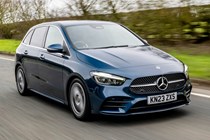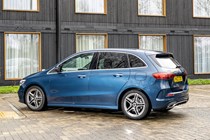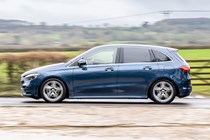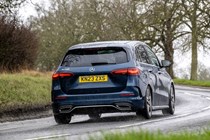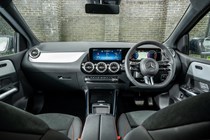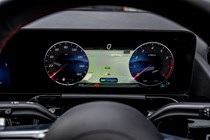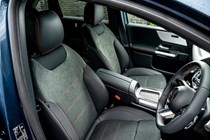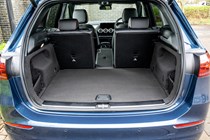
Mercedes-Benz B-Class engines, drive and performance
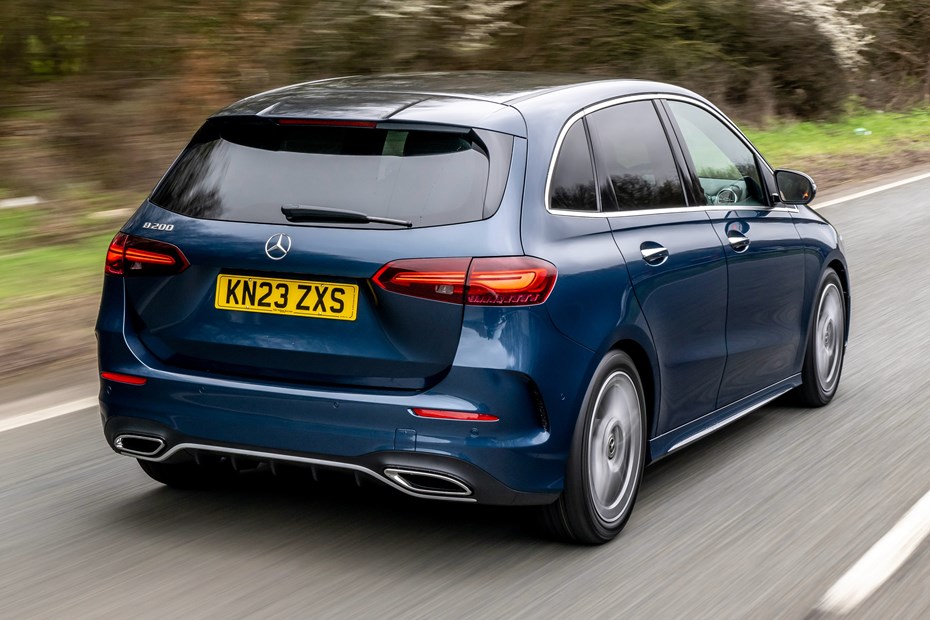
- Only two engines available
- One mild-hybrid petrol, one diesel
- Both come with an automatic transmission
Petrol engine
The B-Class’s engine range was slashed to just two in 2023. Although the petrol gets mild hybrid assistance, you can’t have a plug-in hybrid while the all-electric EQB is based on the GLB SUV, and not this. If you want more choice, the BMW 2 Series Active Tourer has similarly powerful petrol and diesels, plus a punchier 2.0-litre petrol and a plug-in hybrid.
If petrol’s your thing, you’ll find a 1.3-litre four-cylinder engine in the B200 – the same kind you’ll find under the bonnet of the smaller A-Class, as well as the Nissan Qashqai. It’s a smooth and undistinguished power unit that delivers the goods, with more of a focus on economy than performance.
The sole B200 version develops 163hp and 250Nm of torque, and has a 0-62mph time of 8.4 seconds. The mild-hybrid system is primarily to help improve efficiency and power, and is effective in those aims. However, it could still be hesitant, especially when pulling away from a standstill.
We found that outright performance is good, but a bugbear for us is that it does need to be worked quite hard to keep up with the flow, especially when loaded or going uphill, generating a rather unbecoming thrash in the process. The seven-speed dual-clutch transmission is unobtrusive in normal driving, but can take a moment to kickdown to a lower gear.
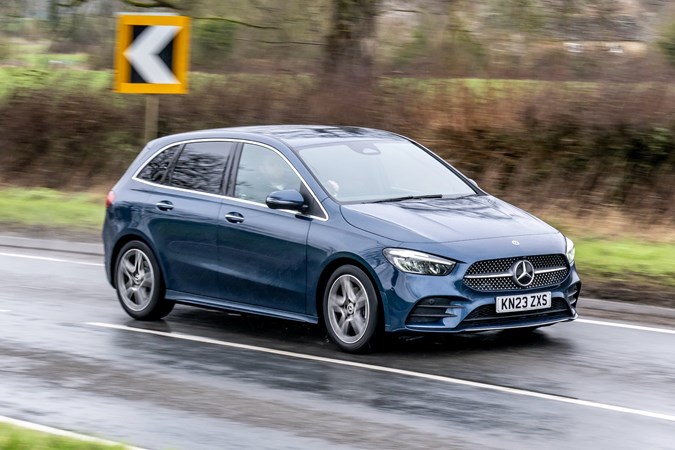
Diesel engine
We’ve driven the B200d and have concluded that despite being fuelled by the unfashionable stuff, there’s still a lot of merit to it. The diesel in the B-Class is a better fit for longer-distance drivers thanks to its larger reserves of torque (pulling power) that suit overtaking, not to mention the more impressive fuel economy claims.
We only get the 2.0-litre B200d in one state of tune – 150hp and 320Nm of torque. This version isn’t exactly slow, and will get from 0-62mph in 8.5 seconds – all but identical to the petrol model – but in most situations feels more muscular than the 200 petrol. We found that it be especially useful when driving with the car loaded up to the roof.
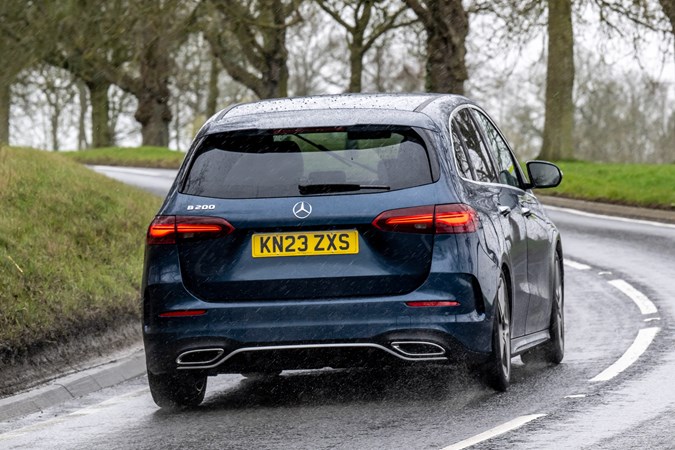
What’s it like to drive?
- Excellent manoeuvrability in town
- Safe and predictable handling
- Good grip levels in corners
We’re pleased to report that the B-Class gets the basics right with pleasantly weighted steering that makes it easy to place on the road (especially once we’d turned off the lane keep assist), peppy performance when you need it and decent comfort most of the time.
It’s not perfect, though. Having driven the AMG Line Premium Plus on giant 19-inch wheels, we found there are compromises. Around town it feels a bit sudden as it thumps through potholes and over ridges, although it reveals a softer edge at speed especially on the motorway. All versions get the same suspension, but we’d expect the smaller 18-inch wheels of AMG Line Executive and Premium, and especially 17-inch shod Sport to improve the low-speed ride.
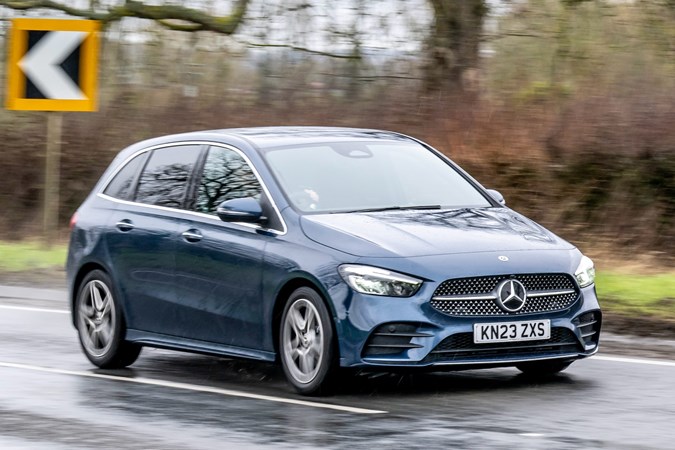
We found the B-Class to be competent but not especially fun in the bends. Bodyroll is well contained and there’s plenty of grip to lean on before electronics reign in any over-exuberance, even if you’ve supposedly turned them off. However, despite the additional steering weight and less dimwitted transmission response Sport mode brings, there’s no sense of fun here. A BMW 2 Series Active Tourer feels more agile if you’re a keen driver.
Low-speed handling and manoeuvrability around town – likely of greater consequence to most B-Class buyers – is impressive thanks to a tight turning circle and raised-up driving position. The steering is light at low speeds which makes it ideal for manoeuvres in town and in car parks, which is where the B-Class is likely to spend most of its time. In this scenario, it handles very well indeed. A-pillar blindspots are noticeable, however, and do affect visibility.


